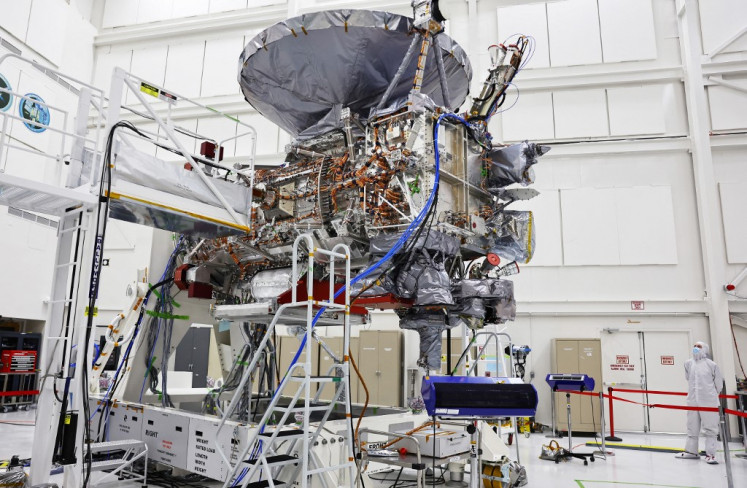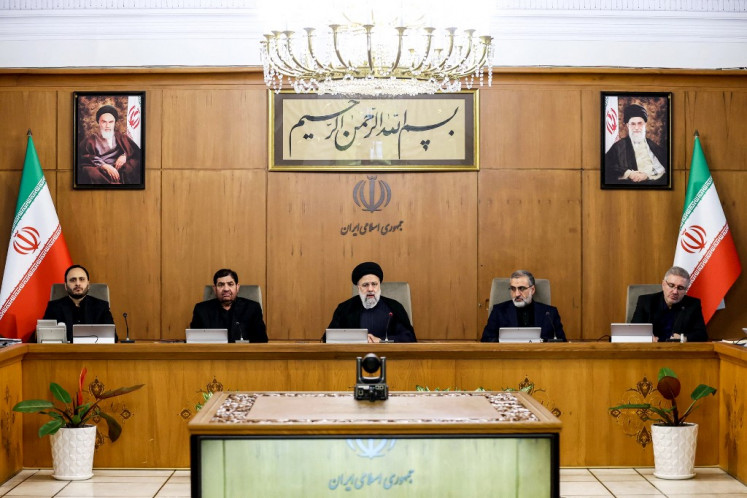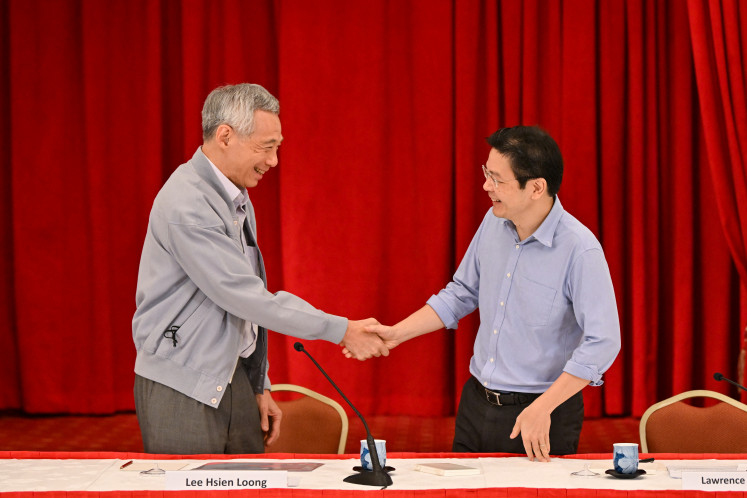In Tokyo, life is not complete without trains
As Tokyo seeks to encourage its inhabitants to use public transport, it has been prepared to meet the massive demands.
Change Size
 Learning by doing: Actual platforms and trains used for staff training are seen from the main building of Tokyo Metro’s Learning Center. (JP/Linda Yulisman)
Learning by doing: Actual platforms and trains used for staff training are seen from the main building of Tokyo Metro’s Learning Center. (JP/Linda Yulisman)
Everyday Tomoi Nasu, 27, travels by train from her house in Gyotoku in Chiba Prefecture to her office in Chiyoda, Tokyo.
Travelling along the Tozai line, the most packed subway line in Tokyo, and the Ginza line, she spends between 40 and 50 minutes on weekdays to reach her office.
“The trains are very punctual. Even though there are sometimes delays, they arrive every 20 minutes at most,” said Tomoi, a systems engineer for a private company.
Tomoi is among 1.4 million passengers transported daily on Tokyo’s busiest line, the Tozai line. In a culture with a high respect for punctuality like Japan, people often get mad with even three- to five-minute delays. Aside from its predictability, passengers may have another reason to opt for trains: affordable fares. Tomoi, for instance, pays only 200 yen (US$1.8) for one trip by train, much cheaper than around 5,600 yen by taxi.
While driving a car may be more convenient, it is not an option because of frequent traffic jams, in addition to expensive parking fees.
“Here, in this big city, I don’t think it’s a smart decision to have your own car,” said Tomoi, who also takes trains on weekends.
As Tokyo seeks to encourage its inhabitants to use public transport, it has been prepared to meet the massive demands.
Tokyo Metro Co. Ltd., which is owned partly by the Tokyo administration, carried 7.24 million passengers daily last year, said Hideo Saito, the firm’s manager for international relations.
It now operates nine lines spanning 195.1 kilometers, while another operator, Toei Subway, owned by the Tokyo metropolitan administration’s transportation bureau, operates four lines spanning 109 km. While Tokyo’s subway system is touted as one of the most complex in the world, a closer look reveals its convenience, including for foreigners.
Compared to subways in other mega-cities, like London or Paris, one may find the Japanese subway routes easier to follow, even if they don’t understand Japanese or can’t remember Japanese names, as each station on the 13 lines comes with a number. So, people just need to remember the line and the station number of where they want to depart and their destination.
A single train comprises 10 cars with a capacity of 2,000 plus passengers during rush hour. Of that figure, 500 passengers can sit, while the others stand.
“We don’t have a specific number for the density of passengers [per square meter] to guarantee safety, but we think if it is below five passengers per square meter, we can offer a relatively comfortable environment for passengers,” Saito said.
To cope with the gradual increase of passengers each year, Tokyo Metro has continued to improve its services. In April last year, it commenced the operation of a learning center that cost 20 billion yen to develop. There, the company instructs drivers before they receive their driving licenses and teaches them to solve a range of technical problems that often occur at train stations.
Tokyo, the first Asian city to build a subway line, remains an inspiration for many countries in the region, including Indonesia, which is now developing a mass rapid transit system in the capital city of Jakarta. To aid the development of the mass transportation project, Tokyo Metro has provided consultation to the Jakarta administration through the Japan International Cooperation Agency (JICA).









